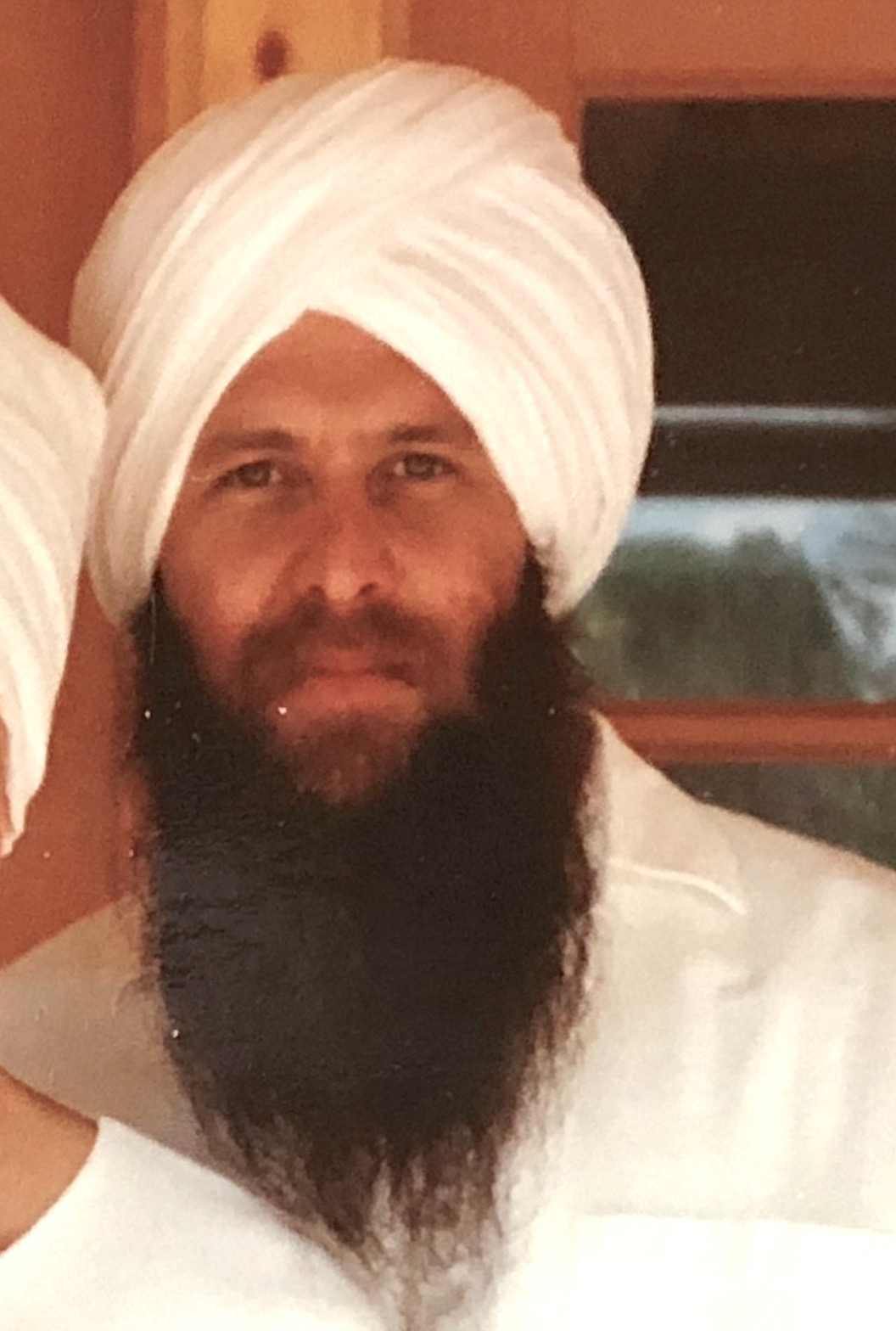Wearing a turban produced many and varied reactions over the years. I never felt offended since I understood peoples reaction was based on their own confusion or fear. Mostly I felt amused. The first reaction I remember came from my father. I was working at one of our family-run shoe stores. I walked in and upon seeing me for the first time wearing a turban, my father burst out laughing. Seeing my non-reaction, he then asked “how long will you wear that?.” I indicated it could be for the rest of my life. Which is more or less true. After wearing a turban daily for over 20 years, I decided to only wear this effective technology when teaching. Once while walking at night in Miami, an obviously drunk man looked up and in surprise said, “Oh swami.” We were both surprised by his comment. He was trying to be funny with a mix of respect.
On another occasion in a food store in Santa Fe, I overheard a small boy, who upon looking up a the white cloth tied around my head, and with obvious concern in his voice, said, “Mommy, that man hurt his head.” She was embarrassed for a moment until she could see my reaction was amusement. We both explained to the boy I was wearing a turban, not a bandage.
The area around the Mother Ashram in Espanola, New Mexico, was a dominantly Hispanic neighborhood. The locals were uncertain about what to think of our white turbans. But the world over, people do some of the same things in such situations. They fear what they do not understand. They dealt with their fear by calling us names. The most popular was, ‘diaper head’, and ‘Q-tip’. Although intended to insult, they came across as childish attempt to make contact. So we made contact and over the years we formed a close relationship with the local community.
I had other funny situations when running my advertising business in Sant Fe. This required me to interact with many non-turbaned people working at radio stations, newspapers and freelancers like artists and photographers. At the time the three most popular turban colors were the basic white, a dark blue which represented the warriors who fought injustice alongside Guru Gobind Singh (hundreds of years ago), and the orange color which traditionally was for the monks who abstained from sex and otherworldly pleasures. I am a pretty relaxed person by nature and working with people they also became relaxed enough to ask me questions about the white clothes, the turban and other things they have heard about our group. But the number one question, they wanted to know the meaning of the different colored turbans. I could not resist having some fun with them, so my standard answer was the ones wearing the blue turbans are the workers, the orange turbaned people were our sex partners and the white turban yogis (I always wore white) were royalty. Said with a straight face they always believed me for a few seconds at least. Then we had a good laugh and I told them the real meaning.
The technology of the turban is actually rather interesting. I would explain to people the diagonal pattern of how the cloth is tied on the head promoted strength, the white color helped to protect, the cotton cloth filtered noise, the covering the top of the head protected us from too much sun, the pressure above the eyebrows helped to remain neutral, and the slight rise in the middle of the forehead helped to keep the third eye active. Having explained this to whoever was asking I would add my personal best reason for wearing the turban. Tying the turban was like wrapping a present (in this case the present was my head) and giving it to God. In other words, let the One who has created you take care of managing His creation. It is a way to understand the limits of our own will in directing life. Like the old joke, “How do you make God laugh?”. The answer is always, “Tell Him your plans.”
